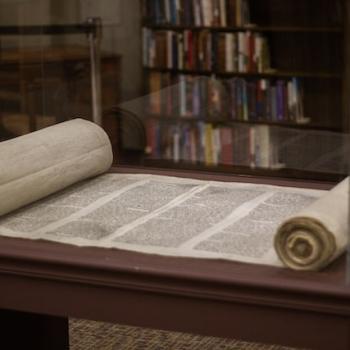Jesus was put on trial, slapped around, savagely whipped causing skin and muscle to be shredded apart, had thorns shoved deeply into his scalp until blood flowed freely, was beaten beyond recognition, forced to carry the the heavy ancient torture device across his already raw back that he would soon be nailed to, spat on, ridiculed, mocked, and finally crucified. Why did he go through all of this? Why Jesus put himself through all of this when he could have saved himself at anytime. Well, the answer is actually quite simple. He did it for you and me. He took upon himself the punishment for sin that we deserve. God’s love runs so deep that he not only provided the sacrifice needed for our sin, he became that very sacrifice. This should bring us to our knees in gratitude, service, reverence, obedience, and love.
As if that were not enough, our Savior made seven sign-off statements from the cross. As he signed-off from his earthly, humanly existence and completed the work needed to regenerate our hearts anew before God Almighty, he spoke seven statements and these statements give us incredible insight into the final thoughts Jesus had and the purpose in which he voluntarily died as our substitute.
First, Jesus said, “Father, forgive them, for they know not what they do” (Luke 23:34). Jesus’ first statement is one of forgiveness for the very people who are taking his life. This shows the complete selflessness of Jesus and his unfailing commitment to saving even the worst of sinners through the cross.
Second, Jesus said to one of the thieves being crucified next to him, “Truly, I say to you, today you will be with me in Paradise” (Luke 23:43). Jesus’ second statement is one of salvation. Jesus was about to die to atone for the sins of that thief and open “Paradise” as a gift for him to enjoy as the pattern for all those who would come to believe in Jesus for their salvation.
Third, Jesus said to his earthly mother, Mary, and his disciple and closest friend, John, “Women, behold, your son!… Behold, your mother!” (John 19:26-27). As Jesus looked down upon the crowd as he was suffering on the cross he saw his mother whom had raised him and whom he loved dearly, who no doubt was beside herself at the sight of her oldest son hanging there bruised, battered and dying. Concerned for his mother, Jesus third statement is an assignment for his best friend, John, to take care of Jesus’ mother and treat her like a loving son in his place. In this act we once again see the unmatched selflessness of Jesus – these first three statements of Jesus are given to murderers, a thief, and his mother, he had given no thought to his own needs yet.
Fourth, Jesus said, “I thirst” (John 19:28). The fourth statement of Jesus reminds us that he humbly suffered as a human being although he was divine. As a human he experienced all of the same physical pain and suffering that anyone in his place would have felt. Jesus had no intention to take any sort of “divine shortcut” or to ease up his very real and tangible excruciating physical pain. As incredible as it seems, the God who created water, in fact the very Living Water himself, was in dire need of a drink to satisfy his own thirst and was denied even that simple request.
Fifth, staying true to the quintessential Bible teacher that he was, Jesus quotes Psalm 22:1 saying, “My God, my God, why have you forsaken me?” (Matthew 27:46). It was at this moment that our sin was put upon the perfect and sinless Jesus (Isaiah 53:6), and three hours of darkness fell upon the earth, making it appear momentarily that the “dominion of darkness” had indeed conquered Jesus.In reference to this darkest moment in all of history, 2 Corinthians 5:21 says, “For our sake he [God] made him [Jesus] to be sin who knew no sin.” Martin Luther declared that at that very moment Jesus became the most “grotesque, ugly, and hideous” thing in the history of all creation. In what Luther called “the great exchange,” the sinless Jesus so completely took our place that he became the worst of what we are. Jesus actually took upon himself our sin with all of its shame and despicable disgust.
Also in reference to what took place at the point of Jesus’ fifth statement, Galatians 3:13 quotes Deuteronomy 21:23 saying, “ Christ redeemed us from the curse of the law by become a curse for us –for it is written, ‘Cursed is everyone who is hanged on a tree.’” It was our sin, we were the ones condemned, we deserved the punishment, but it was Jesus, the sinless Savior, who took our place therefore taking on our sin and condemnation so that we could put on a new nature in Christ by his power free from sin and condemnation.
Sixth, Jesus said with an authoritative tone of victory, “It is finished” (John19:30). At this point in time, the atonement for sin was complete, and God’s holiness, righteousness, justice and wrath were satisfied in the crucifixion of Jesus. Unfortunately, some have taught that Jesus action was not enough. They claim he had to go to hell and suffer for three days before his resurrection as further atonement. This is untrue and usually stems from a later revision of the Apostle’s Creed. We have already clearly seen Jesus, and the thief, would be together that very day in Paradise, and since they would be, it negates any alleged time in hell. The Bible never tells us Jesus went to hell, it only tells us he went to the tomb (Matt. 27:59-60; Mark 15:46; Luke23:52-55; John 19:41-42).
Seventh, Jesus said, “Father, into your hands I commit my spirit!” (Luke 23:46). Jesus saved his final breath to shout his triumphant victory to all by assuring that he had been restored to God the Father in all his fullness after atoning for the past, present, and future sins of humanity.
Then, the Bible merely states that Jesus breathed his last and died…But we know it doesn’t end there, not by a long shot. Three days after his death Jesus rose back to life. In so doing, he was victorious over the Enemy, sin, and death, just like he continually said he would be (Matt. 12:38-40; Mark 8:31; John 2:18-22).
:Hebrews 12:2 exhorts us to “[look] to Jesus, the founder and perfecter of our faith, who for the joy that was set before him endured the cross, despising the shame, and is seated at the right hand of the throne of God.” Notice, “for the joy that was set before him…,” Jesus went through all that he did on the cross because he knew the joy that would be waiting for him on the other side of his resurrection, where God is glorified and sinners are forgiven.
Today, Jesus sits in power and authority in heaven with the Father, smiling down on us as he rules and reigns over all of creation and prepares for the day of his final return to establish his throne on the earth for all eternity. Let us serve him with worship, praise, and love
This was a guest post from Dr. Jeff Hagan.
Jeff is an ordained Christian minister with over 23 years of ministry experience. He has attended Gordon-Conwell Theological Seminary, Luther Rice Seminary, Tyndale Seminary and a handful of other institutes as well. He has earned several degrees including the Doctor of Christian Education and the Doctor of Theology.













